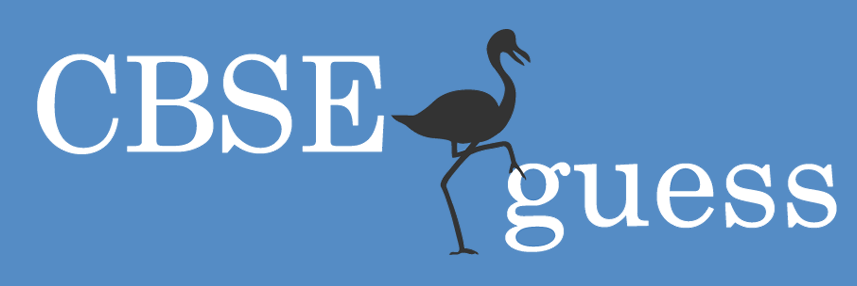The Path to Becoming a Doctor in the US: A Multi-Stage Process
From Pre-Med to Practice: Your Roadmap to Becoming a Doctor in America
Becoming a doctor in the US is a long and rigorous but highly rewarding journey. Here’s a comprehensive overview of the key aspects for top medical colleges:
From Pre-Med to Practice: Your Roadmap to Becoming a Doctor in America

Unlike some other countries where medicine is an undergraduate degree, in the US, it’s a postgraduate program. This means you typically go through two main stages before even entering residency:
- Undergraduate (Pre-Med) Education:
- Duration: Typically 4 years for a Bachelor’s degree.
- Qualification: You need a bachelor’s degree from an accredited college or university. While many pre-med students major in science fields like Biology, Chemistry, or Health Sciences, you can major in almost anything as long as you complete the specific prerequisite courses for medical school.
- Prerequisite Courses (General):
- One year of Biology with lab
- Two years of Chemistry (General and Organic) with lab
- One year of Physics with lab (some schools may desire, not require, lab)
- One year of English (must include writing)
- One semester of Biochemistry (often required, lab not always required)
- Math (Calculus and Statistics are often recommended)
- GPA: While there’s no official minimum, competitive applicants for top medical schools often have a GPA of 3.7 or higher, with many successful applicants for Ivy League schools having 3.9+.
- Extracurriculars: Crucial for your application! This includes:
- Clinical experience: Direct patient interaction (e.g., EMT, medical assistant, clinical volunteering).
- Shadowing: Observing physicians in various specialties and settings.
- Research experience: Participation in lab or clinical research, aiming for at least one publication.
- Community service: Non-clinical volunteering showing commitment to serving diverse populations.
- Leadership roles.
- Standardized Test: The Medical College Admission Test (MCAT) is mandatory. A competitive score for top schools is generally 515+, with 520+ being highly competitive for Ivy League programs. The MCAT is valid for 2-3 years.
- Letters of Recommendation (LORs): Typically 3-6 letters, including from science professors, non-science professors, and supervisors from your clinical/research experiences.
- Statement of Purpose (SOP)/Personal Statement: A strong essay explaining your motivation for medicine, academic journey, and career goals.
- English Proficiency Tests: If your undergraduate degree was not taught in English, you’ll likely need to take IELTS (6.5-7.0 band) or TOEFL iBT (90-100+).
- Duration: Typically 4 years for a Bachelor’s degree.
- Medical School (MD Program):
- Duration: Typically 4 years for the Doctor of Medicine (MD) degree. Some accelerated 3-year programs exist.
- Structure:
- Years 1-2 (Pre-clinical phase): Focus on science-based coursework. This phase typically ends with the USMLE Step 1 exam.
- Years 3-4 (Clinical Rotations): Hands-on experience in various medical specialties. This phase ends with the USMLE Step 2 exam.
- Age: There is no upper age limit for applying to or attending medical school in the US. The average age of a first-year medical student is around 24, but many “nontraditional” students in their 30s, 40s, or even older successfully matriculate. Some universities may have a minimum age of 18 by the start of the course due to early clinical contact.
- Fees (Average, per year, including tuition, fees, health insurance – as of 2024-2025 data):
- In-state public medical school: ~$40,493 – $52,107
- Out-of-state public medical school: ~$61,670 – $77,365 (can be higher)
- Private medical school: ~$66,176 – $76,112 (can be significantly higher for top-tier private institutions like Columbia, Duke, Harvard, Yale, which can be $70,000-$80,000+ per year)
- Total cost for 4 years (including living expenses): Can range from $250,000 to $350,000, and sometimes even higher.
- Note: These figures are averages. Actual costs vary widely by institution and whether you’re an in-state or out-of-state student. Many students incur significant debt, averaging around $200,000-$250,000 at graduation.
- Duration: Typically 4 years for the Doctor of Medicine (MD) degree. Some accelerated 3-year programs exist.
After Medical School: Residency and Beyond
- Residency: After graduating from medical school, you enter a residency program, which is required for medical licensing.
- Duration:3 to 7 years, depending on the specialty.
- Examples: Family Medicine, Internal Medicine, Pediatrics (3 years); Emergency Medicine, Neurology, Psychiatry, OB/GYN (3-4 years); Dermatology (4 years); Diagnostic Radiology (5 years); General Surgery (5 years); Neurosurgery (7 years).
- During residency, doctors take the USMLE Step 3 exam (after the first year).
- Duration:3 to 7 years, depending on the specialty.
- Fellowship (Optional): Many physicians pursue further specialization through a fellowship after residency.
- Duration: Adds 1 to 2 years or more.
- Duration: Adds 1 to 2 years or more.
- Board Certification: After residency, many doctors pursue American Board of Medical Specialties (ABMS) certification.
- Total Timeline to Practice: Including undergraduate, medical school, and residency, it typically takes 10 to 14 years to become a practicing doctor in the US, depending on your chosen specialty and whether you pursue a fellowship. Most students start practicing in their early to mid-30s.
Top Medical Colleges in the US
- Harvard University (Harvard Medical School): Consistently ranked among the top, known for its cutting-edge research, diverse curriculum, and global health initiatives.
- Stanford University (Stanford University School of Medicine): Renowned for its innovation, research, and focus on technology in medicine.
- Johns Hopkins University (Johns Hopkins School of Medicine): A historical leader in medical education and research, particularly strong in clinical training and public health.
- University of California – San Francisco (UCSF School of Medicine): A public institution highly respected for its research, clinical care, and commitment to underserved populations.
- University of California – Los Angeles (UCLA David Geffen School of Medicine): Another top public medical school, strong in research, diverse patient populations, and excellent clinical training.
- Yale University (Yale School of Medicine): Known for its “Yale System” of medical education, which emphasizes student-led learning and less reliance on traditional grades in the preclinical years. Strong in research and humanities in medicine.
- Columbia University (Vagelos College of Physicians and Surgeons): A highly selective program in New York City, known for its strong research programs and clinical opportunities in a major urban center.
- University of Pennsylvania (Perelman School of Medicine): One of the oldest medical schools in the US, known for its strong research, innovative curriculum, and excellent clinical training.
- Duke University (Duke University School of Medicine): Highly regarded for its integrated curriculum, strong research focus, and emphasis on leadership and professionalism.
- University of Michigan – Ann Arbor (University of Michigan Medical School): A top public medical school with a strong reputation for research, clinical excellence, and a collaborative learning environment.
Important Note for International Applicants: Admission to US medical schools is highly competitive for all applicants, and even more so for international students. Many schools have limited spots for international students, and some may not accept them at all. Strong academic records, MCAT scores, significant clinical and research experience, and compelling personal statements are essential. Financial aid for international students can also be more limited.
It’s highly recommended to use resources like the AAMC’s Medical School Admission Requirements (MSAR) database for specific, up-to-date information on each medical school’s prerequisites, admissions statistics, and policies regarding international applicants.


